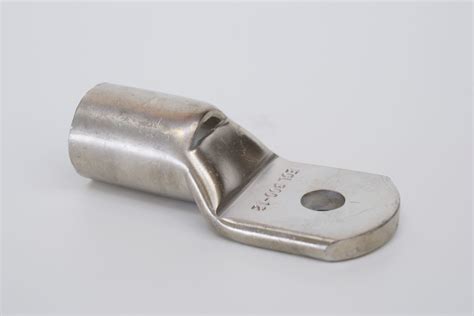Lugs: The Foundation of a Secure and Reliable Connection
Introduction
Lugs play a critical role in electrical connections, ensuring a secure, reliable, and efficient transfer of electricity. They form the vital interface between wires, cables, and electrical equipment, enabling the proper flow of current and preventing potential hazards. This article provides a comprehensive guide to lugs, covering their types, materials, applications, and best practices for their installation and maintenance.
Types of Lugs
Lugs come in various types, each designed for specific applications:
-
Crimp Lugs: These are the most common type, using a crimping tool to make a permanent connection by compressing the lug around the wire.
-
Compression Lugs: Similar to crimp lugs, but they provide a more secure connection by compressing both the wire and the lug simultaneously.
-
Screw Lugs: These are connected by tightening a screw onto the lug, which secures the wire.
-
Solder Lugs: These are used for permanent connections by soldering the wire to the lug.
-
Bolted Lugs: Designed for heavy-duty applications, these lugs are bolted onto the wire, providing maximum strength and reliability.
Materials Used for Lugs
The choice of material for lugs depends on the specific application and environment:

-
Copper: The most common material, offering high conductivity and ductility.
-
Aluminum: A lightweight and cost-effective option, but it is not as strong or conductive as copper.
-
Bronze: Provides excellent corrosion resistance and is often used in outdoor applications.
-
Steel: Used in heavy-duty applications where strength is critical, but it is not as conductive as copper.
-
Stainless Steel: Offers high corrosion resistance and strength.
Applications of Lugs
Lugs are used in a wide range of electrical applications, including:

- Connecting wires to circuit breakers and fuses
- Terminating cables in distribution panels
- Connecting wires to transformers and switchgear
- Grounding electrical systems
Benefits of Using Lugs
Lugs provide several advantages over direct wire connections:
-
Security: They create a secure and vibration-resistant connection, preventing accidental disconnections.
-
Reliability: The use of proper lugs ensures optimal conductivity and reduces the risk of arc faults and overheating.
-
Efficiency: Lugs facilitate efficient connections, reducing installation time and minimizing power loss.
-
Modularity: Lugs allow for easy disconnect and reconnection when necessary.
Choosing the Right Lug
Selecting the appropriate lug for an application requires considering several factors:

-
Wire Size: The lug must be rated for the gauge of the wire being connected.
-
Current Rating: The lug must be able to handle the maximum current that will flow through it.
-
Material: The material of the lug should be compatible with the wire and the environment.
-
Connection Type: The lug should match the preferred connection method (crimp, compression, screw, etc.).
Installation and Maintenance of Lugs
-
Prepare the Wire: Strip the insulation off the wire to the proper length, ensuring a clean and unoxidized surface.
-
Insert the Wire into the Lug: Place the stripped wire into the lug, ensuring it is fully seated.
-
Crimp, Compress, or Screw: Follow the manufacturer's instructions for the specific type of lug to create a secure and permanent connection.
-
Insulate the Connection: Wrap the connection with electrical tape or heat shrink to prevent accidental contact or exposure to elements.
-
Regular Inspection: Periodically inspect lugs for signs of corrosion, loose connections, or damage.
Tips and Tricks
- Use a torque wrench to apply the appropriate tightening force when installing bolted lugs.
- Apply anti-oxidant paste to improve conductivity and prevent corrosion.
- Always use the correct size lug for the wire gauge.
- Do not bend or damage lugs during installation.
- Inspect lugs regularly, especially in harsh or humid environments.
Frequently Asked Questions (FAQs)
-
What is the purpose of a lug?
A. To provide a secure and reliable connection between wires and electrical equipment.
-
What are the different types of lugs?
A. Crimp, compression, screw, solder, and bolted lugs.
-
Which material is best for lugs?
A. Copper, aluminum, bronze, steel, or stainless steel, depending on the application and environment.
-
How do I choose the right lug for my application?
A. Consider the wire size, current rating, material, and connection type.
-
Can I repair a damaged lug?
A. No. Damaged lugs should be replaced immediately to ensure safety and reliability.
-
How often should I inspect lugs?
A. Regularly, especially in harsh or humid environments.
Call to Action
Proper selection, installation, and maintenance of lugs are crucial for ensuring the safety and reliability of electrical connections. By following the guidelines outlined in this article, you can effectively utilize lugs to establish secure and efficient electrical systems. Remember to always consult a qualified electrician for any electrical work or repairs.
